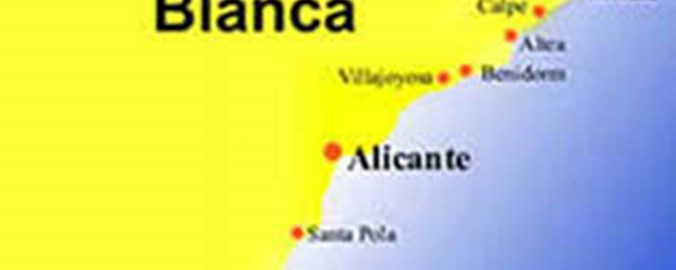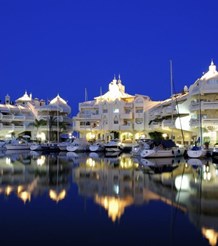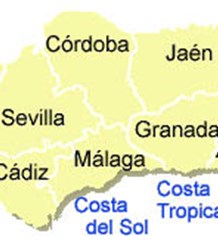
Costa Blanca Information
The Costa Blanca is a 170 mile stretch along the Mediterranean coast in the south east of Spain. The capital is Alicante and it has a population of 4 million.
Stretching from Denia in the north to Mojacar in the south, this stretch of coast became a popular tourist destination in the 1950's and 60's. It consists of two very different types of scenery: to the north there is a range of mountains which run parallel to the sea, descending at times to form cliffs and to the south there is a vast plain of sand patches, palm trees and salt pans, making up the backdrop for the beaches.
The World Health Organisation has stated that the area around Denia is the third healthiest place in the world to live. It has been given this status because of the mild year-round climate with low humidity, which is especially good for arthritis sufferers. The traditional cuisine of the area is rich in olive oil, vegetables, fruits, sea food and rice dishes. These are the main ingredients of the Mediterranean diet which is considered to be extremely healthy.
Citrus fruits grow in abundance and comprise 80% of Spain's total production. They are the largest export, while other important exports are olive oil, leather shoes, toys and wine.
From cosmopolitan towns and resorts where there is a 24-hour lifestyle, to sleepy little villages filled with peace and tranquility, the Costa Blanca is a place that offers something for everyone.
The Costa Blanca has many famous golf courses but it also offers many other sports associated with mountains and sea including water sports, climbing, hang gliding, horse riding and many more.
Alicante, the region’s capital, has a population of about 310,000 and is famous for its beautiful boulevards, shops, bars, restaurants and bustling nightlife.
Benidorm is one of the most popular towns of the area, also renowned for its abundance of bars, restaurants, shops and nightlife. There is a rock offshore known as Peacock Island because of the many species of birds living there. The waters surrounding this rocky outcrop have been declared a marine reserve and consequently no fishing is allowed. Trips on glass-bottomed boats to see the colourful underwater life are a popular tourist attraction.
The nearest airports are at Alicante, Valencia and Murcia.




